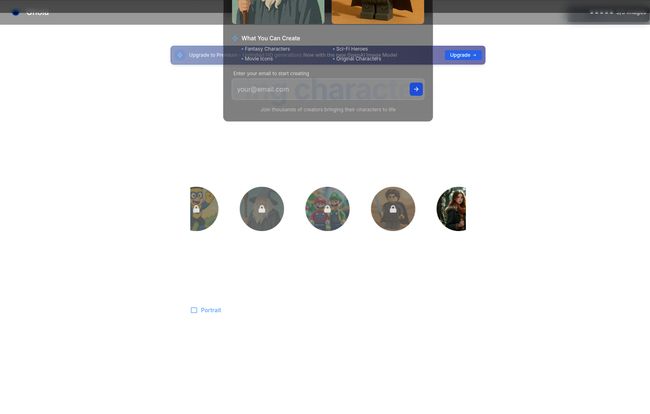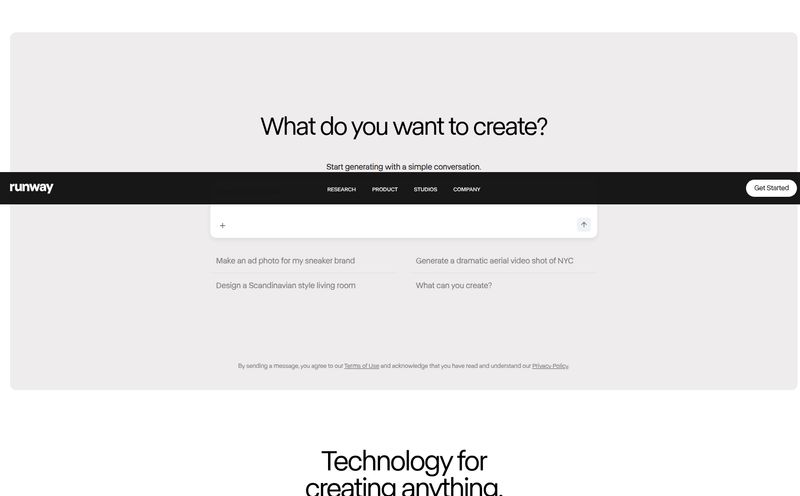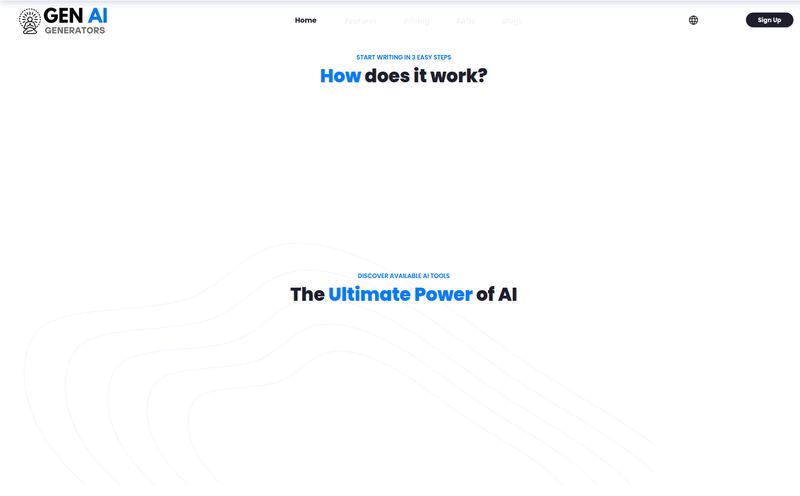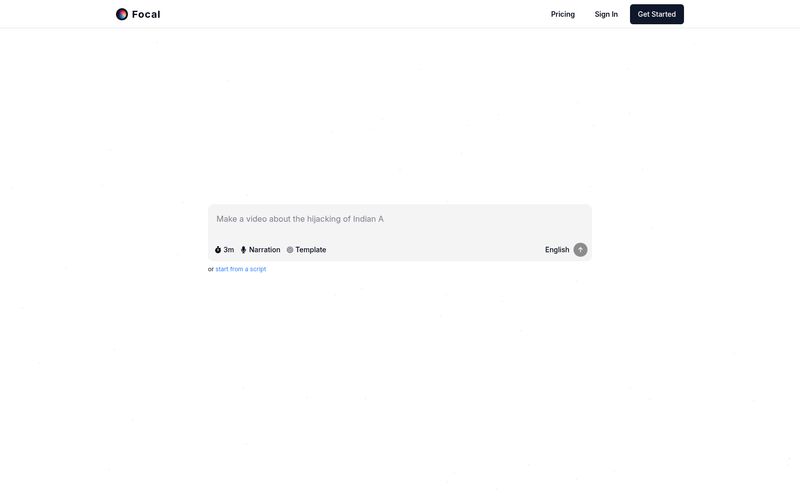You know the feeling. You’re a hundred pages deep into a new fantasy epic. The author describes the protagonist: "eyes like chips of flint," "a jaw set with grim determination." You build a picture in your head. It’s your version of that hero. Then you see the cover art, or worse, the movie casting, and it’s all wrong. A little piece of you dies inside.
For years, the face of a character was a private contract between the author's words and the reader's imagination. But we're in a weird, wonderful new age of AI. Tools are popping up that promise to bridge that gap. I've seen a ton of them, from the hyper-realistic to the downright bizarre. Recently, a new one called Ghola caught my eye. Its promise isn't just to generate a face, but to generate the face, based on the actual lore of the story.
So, being the curious (and slightly obsessive) book nerd and SEO guy I am, I had to see if it lived up to the hype.
So, What's the Deal with Ghola AI?
Let's get the technical stuff out of the way. Ghola is an AI character visualization tool. You give it a character’s name and the book or story they're from (e.g., "Paul Atreides" from "Dune"), and its AI model gets to work.
But here’s the kicker, and the reason I’m even writing this. It’s not just pulling from a generic database of faces. Ghola claims to be lore-accurate. It scours its knowledge of the source material to pull out those little details—the eye color, the scars, the specific style of armor mentioned in chapter three. It's a fascinating premise.
(And yes, for my fellow sci-fi geeks, the name is almost certainly a nod to the reanimated clones from Frank Herbert's Dune series. A nice touch that shows the creators are probably fans themselves.)
My First Spin with the Character-Making Machine
Signing up is painless. You pop in your email and you're off to the races. The interface is clean, almost minimalist. No confusing sliders or a million dropdowns, which I appreciate. My brain has enough tabs open as it is. It's just: Character Name, Story/Book. Simple.
For my first test, I decided to throw it a bit of a curveball. Not Harry Potter, not Gandalf. I went with Kvothe from Patrick Rothfuss's The Name of the Wind. He’s a character with very distinct features—the flame-red hair, the "constantly changing" green eyes. A good test of that "lore-accurate" claim.
I typed it in, selected a portrait style, and hit generate.

Visit Ghola - Character Visualization
The result? It was… pretty damn close. The hair was definitely red. The eyes had that piercing quality. Was it the exact image from my head? No, of course not. That's impossible. But it was a valid, compelling interpretation. It felt like Kvothe. It was like seeing a sketch from someone who had actually read the book, not just the back-cover summary.
The Good, The Not-So-Good, and The AI Weirdness
No tool is perfect, especially in the fast-moving world of AI. After playing around with my five free credits (more on that later), I got a pretty good feel for Ghola's strengths and weaknesses.
Where Ghola Genuinely Impresses
The biggest win here is the specificity. I’ve spent countless hours trying to wrestle with Midjourney or Stable Diffusion, typing in prompts that are a paragraph long. "A 30-year-old man with a scar over his left eye, dark curly hair, wearing 17th-century leather armor, grim expression, torchlight, fantasy oil painting style..." You know the drill. It's exhausting.
Ghola strips all that away. It does the heavy lifting of interpreting the lore for you. This makes it incredibly easy to use for its intended purpose. For writers trying to get a quick visual reference for their own OCs, or for Dungeon Masters who need to show their players what that mysterious NPC looks like right now, it's fantastic. You get portrait, landscape, and square options, which is a nice, practical touch for different use cases.
A Few Bumps in the Road
Okay, let's be real. It's not magic. The quality can be a bit variable. My Kvothe was great, but a test with a more obscure character from a different series produced something a little… generic. The AI is only as good as the data it's trained on, and how well it can parse your input. If you spell a name wrong or the story is too niche, you might get a confused-looking shrug in image form.
And then there's the biggest hurdle for casual users: the limited free generations. You get 5 free images. That's it. Enough to get a taste, but not enough to, say, visualize the entire fellowship of the ring. It's a classic freemium model, designed to get you to upgrade. Not a bad thing, just something to be aware of.
Who Should Be Using Ghola?
This isn't a tool for everyone. If you're an AI artist looking for maximum control and infinite tweaking, you'll probably stick with the big, complex platforms. But Ghola has carved out a brilliant niche.
I see this being a godsend for:
- Authors and Writers: Getting that first visual of a character you just created can be a powerful motivator. It makes them feel more real.
- Tabletop RPG Players & DMs: Need a quick visual for a character or NPC? This is way faster than trawling Pinterest for hours hoping to find something that "kinda fits."
- Fan Fiction Authors: A great way to create art for your stories and share a concrete vision with your readers.
- Avid Book Readers: It's just plain fun! Finally settling the debate with your book club about whether a character is hot or not.
The All-Important Question of Pricing
The pricing structure is refreshingly simple. There's no confusing credit packs or subscriptions with ten different tiers.
| Plan | Generations | Quality | Cost |
|---|---|---|---|
| Free Plan | 5 Images | Standard | Free |
| Premium Plan | Unlimited | HD Generations | Paid (check site for current pricing) |
Is the premium plan worth it? My take: if you fall into one of those user categories above and find yourself constantly needing character visuals, then yes. The cost of "unlimited" quickly becomes more economical than paying per-image on other platforms, especially if you value your time and hate prompt engineering. For the casual user who just wants to see what Hermione really looks like, the 5 free images are a fun weekend experiment.
Ghola Versus The AI Art Titans
Some might ask, "Why not just use Midjourney?" It's a fair question. Midjourney is an absolute beast, capable of creating stunning, complex scenes. But it's also a beast to tame. It’s a generalist.
Ghola is a specialist. It’s the difference between a massive, all-purpose factory and a small, artisan workshop. Ghola's sole focus on lore-based character generation is its unique selling proposition. It trades infinite possibility for focused, fast, and relevant results. You won't be making epic landscapes in Ghola, but you'll get a portrait of your favorite rogue in a fraction of the time and with a fraction of the fuss.
My Final Take on This Character Conjuror
So, is Ghola a revolution in AI art? Not quite. But it is a smart, well-executed tool that solves a very specific problem for a very passionate audience. It removes the friction from character visualization.
I went in skeptical, as I always do, but I've come away impressed. It’s a tool that understands its purpose and its audience. It knows that for a writer or a reader, the story is what matters most, and it does a respectable job of honoring that. It won't replace the images in my own head, but it's a fantastic new way to bring them out into the light for a chat. And for that, it's earned a spot in my digital toolbox.
Frequently Asked Questions
How does Ghola make the images lore-accurate?
Ghola uses an AI model that has been trained on a massive amount of text from books, wikis, and fan discussions. When you enter a character and story, it cross-references that information to pull out descriptive keywords (like hair color, eye color, clothing, etc.) to guide the image generation process.
Can I use Ghola for my own original characters (OCs)?
Yes, you can! The images on their site mention "Original Characters." While it won't have "lore" to pull from, you can input your character's name and perhaps a short description of their world in the "story" field to guide the AI's aesthetic. It's a great starting point for visualizing your own creations.
Is the free version of Ghola actually useful?
Absolutely. Five generations is enough to test its core functionality and see if it works for your favorite characters. It's a perfect, no-risk trial to decide if a premium plan is right for you. I found it was enough to convince me of the tool's potential.
What happens if the AI gets a character detail wrong?
Since AI generation has an element of randomness, it might not be perfect every time. The best approach is to try generating the image again. Sometimes a second or third attempt will yield a more accurate result. Also, ensure your spelling of the character and story is precise.
Are the images generated by Ghola unique?
Yes, each image generated is unique. Even if you enter the exact same prompt twice, the AI will produce two different images, similar to other generative AI tools. You won't get a carbon copy of someone else's generation.
Reference and Sources
For those interested in trying it out for themselves, you can find the tool at the official Ghola website. My comparisons were based on my professional experience with other platforms like Midjourney and DALL-E 3.
- Ghola: The official website for the tool.
- Midjourney
- OpenAI's DALL-E 3



